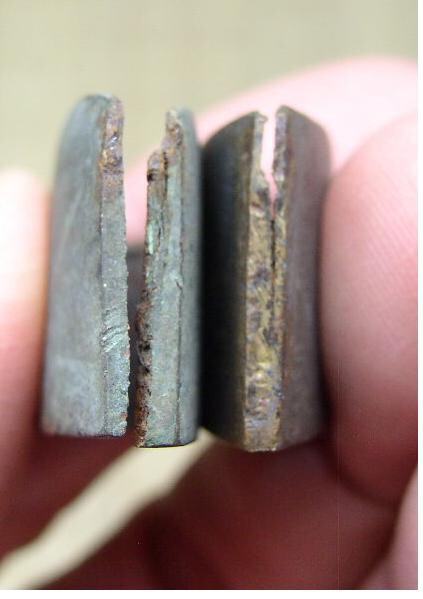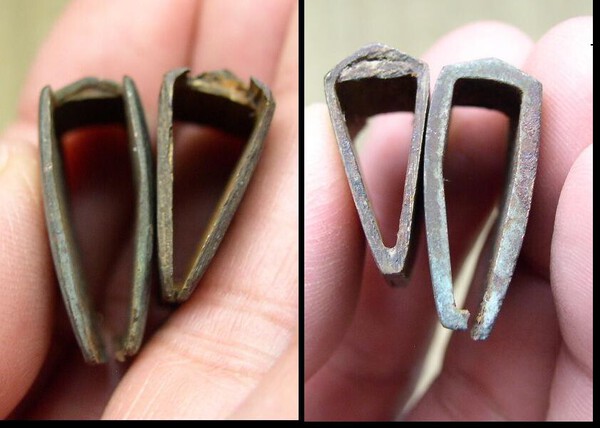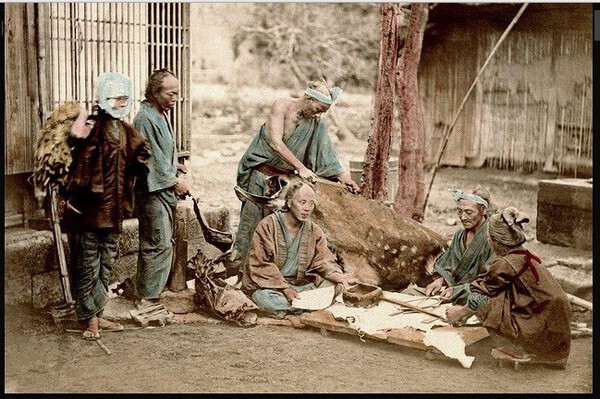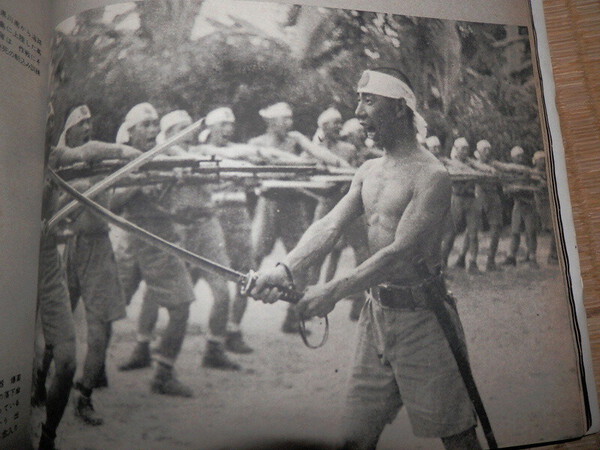-
Posts
1,690 -
Joined
-
Last visited
-
Days Won
11
Content Type
Profiles
Forums
Events
Store
Downloads
Gallery
Everything posted by Dave R
-
Shanghai 1930s.
-
-

Showato inheritance, very little information
Dave R replied to TroyTF's topic in Military Swords of Japan
The tsuka looks legit, but frankly that nakago is as dubious as you can get. -
The problem with these "Koshirae" is that without the blade you can only guess how long they have been together. I used an old tsunagi I had knocking around to mount the pieces up and from the alterations I had to do and proportions resulting I think the saya and tsuka match up. It was an old blade (short nakago) mounted up late in the war, and the leather cover and haikan lost to time. The tsuba I am not so sure, it's very nice under the paint, and is gilded brass with burnishing, so you get both matt and bright areas. Those 94 - 98 tsuba are very handsome when it good condition as opposed to the sad plain brass that we usually see after 70 years of wear and polishing, late war they tended to be plated cast iron. No matter though, it's what it is. Regarding the same, I did think it might be sandpaper as seen on some late war stuff, but inspection under a lens confirms it to be shark of one sort or another. I have an Edo period tsuka with similar, but smoothed down and lacquered over all. Good quality same is and was an import to Japan from further South.
-
Well it's getting more interesting. The Same on the tsuka is Same not sandpaper, but very fine scaled rather than the larger nodules normally seen., possibly Dogfish? The Fuchi is ferrous, iron or steel, as are the menuki and the kabutogane, the menuki gilded and the kabutogane plated, possibly with copper. The fuchi heavily corroded but the usual pattern just about visible, the floor-plate pierced for a retaining clip, but not the side, and so never had a clip. This really looks like it is a late war type 98 tsuka. I tried the paint on the tsuba with acetone, it didn't shift at all, so it looks to be wartime paint. I will be leaving it as is for now, and possibly the future.
-
Seppa and habaki are unpainted copper, natural oxide surface. I need to do better pics!
-
The "same" is a bit odd, and the fuchi might not belong and might be iron or steel. Like I say, a put together or assemblage, which is what I thought when I bought it. It's the tsuba I am concerned with though, under the paint it's a cracker, really nice... but I don't want to strip it if the paint is legit wartime. The Ito is nice and tight and the knots well defined, an expert job. Looking at the same again, it is very like sandpaper, which we know was used late war. The kabutogane fits very tight and well. I think late war, but done as well as was possible at the time.
-
Only the tsuba is painted. Everything else is as expected, brown ito, copper coloured fittings and etc.
-
No arms fairs in my area currently, so I am buying from the internet. My latest purchase purports to be a full koshirae of type 98 in field mounts. I doubt it, but it's a nice traditional saya with some age, and the rest is type 98. The tsuba is a nice one, under the black paint it still has a lot of the gilding, and is burnished to a glitter in the right places..... But it has been painted black over most of the surface. What I would like to know is if this is most likely a post war jobby to make it look more like a traditional one, or if there were circumstances where this would have been a legitimate wartime practice. If the latter, I will keep it as is, otherwise off comes the paint. The price was right, and it looks quite handsome mounted on a tsunagi and in the rack.
-
When trawling the 'net for info on Habaki I found these photo's of finds from the ground. Varied condition and sometimes wrecked, but very useful to see how they were put together. Mainly on Ebay and described as casual or metal detector finds.
-
-
-
Ebay is your friend for that job, but I suggest buying from Japanese vendors and US only.
-
I would suggest that a lot would depend on what was knocking around in the workshop when assembled. It's a utility model and they would use up what was there in the drawers rather than pass on making a sale. Workshops always have oddments left over from previous production runs and projects.
-

please help with information on my grandfathers sword
Dave R replied to Mike T's topic in Military Swords of Japan
The all brown tassel is for Gunzoku, a uniformed civilian employee of the military. They were given ranks equivalent to those of the military and if high enough required to carry a commissioned officers sword. Often they were technical and admin specialists with a higher education level than most soldiers. -
It reminds me of that odd sword posted a couple of weeks back.
-
I think on how common Rinji were, Mr Komiya covered it. They were not a popular sword at the time, but merely what could be afforded/obtained by some officers. The IJA expected to win the war, and their swords to become family heirlooms, and at least be carried post war, so anyone who had the choice would have gone for the type 98 Worst case scenario would have been a negotiated peace,with the IJA still existent as the official armed forces of Japan, in the same way as the German army was post WW1 still, reduced though it was, the official army of the state of Germany.
-
Personal opinion only, I think this is a candidate for a gentle clean rather than a polish. I know that standard "best practice" is to polish the blade, but nihonto is the only area of collecting where an "as new" condition is standard. Sometimes you can lose more than you gain with that practice. It is a nice piece as it is methinks.
-
Lots of variations on the Tuba, remember they were jobbed out to small manufacturers, and what even Mr Komiya calls "Mom and Pop businesses".
-
There are still decent priced showato and gunto available,..... but you have to look, and perhaps be lucky. But yes, prices on such are higher here in the UK, a different policy on bring-backs and fewer actual British troops engaged with the IJA. The main force fighting the IJA for the British Empire was the "Indian Army" who had a different attitude and policy towards souvenirs, as well as living and returning to India. They also gave the IJA every bit as good as they got, and the Gurkha's well gave the IJA a seeing to but not that interested in battlefield pickups.
-
-
You reckon red gloss saya are a mark of a 94?
-
I would suggest that it is later war, and the blade one of those picked up in the sword collection/purchase drives that we now know about..... For those not familiar with what I was meaning here is a doc. from Mr Komiya, thought it appears that the blade is one of those rare genuine family blades. gunto call up 12-23-2017.pdf
-

Tsuba & Seppa Orientation
Dave R replied to CoastieMike's topic in General Nihonto Related Discussion
Your seppa has been punched to make it fit the nakago snuggly. More often seen on Tsuba, but I have not seen it on seppa before.




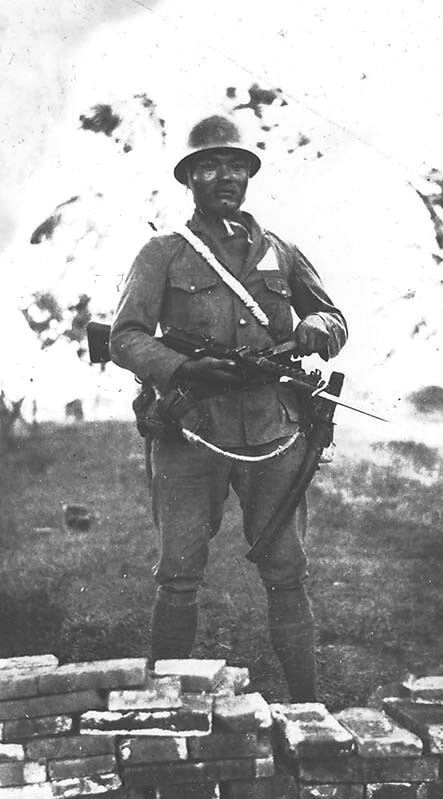


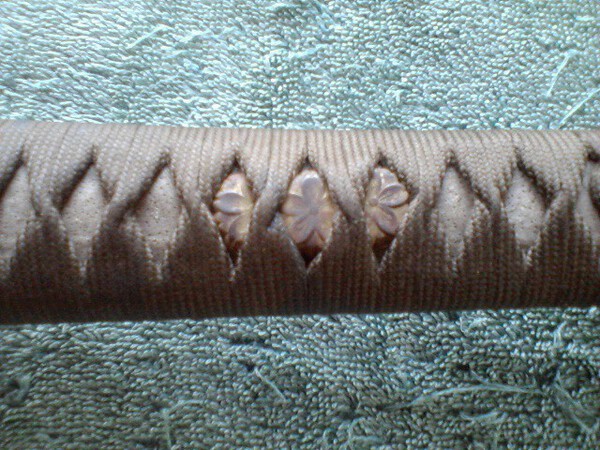







.thumb.jpg.7140442dbac5dec8f15bfcc3f20ecf0e.jpg)

.thumb.jpg.129f619501dc81fb9084b4158b24ffad.jpg)
.thumb.jpg.85854371983360c221db94344d8f05f5.jpg)
